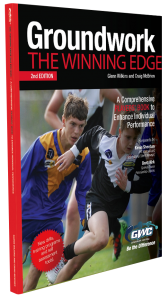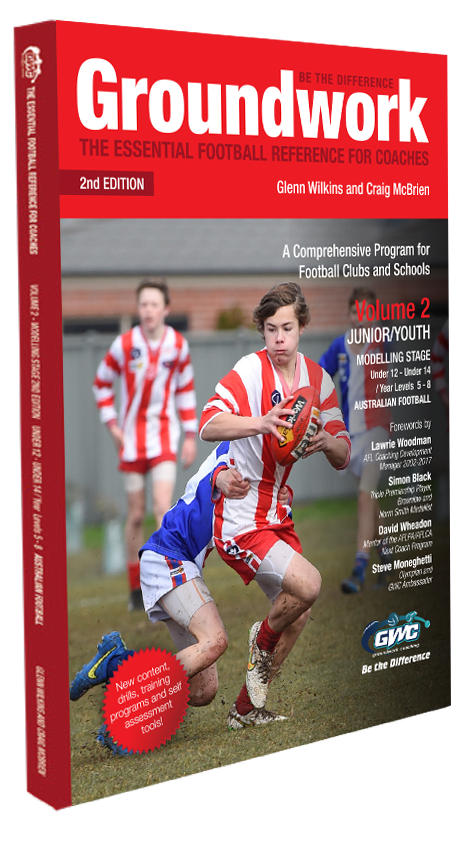THE WINNING EDGE
LEARNING INTENTIONS:
- To develop higher level skills of the game and build physical competences
- To develop both technical and tactical skills, including positional play, skill execution and game based decision making
- Develop higher-level competition skills through modified games and game sense
- Build on performance with strategies on nutrition, recovery, motivation, and sport psychology
- Focus on key components of fitness by providing training programs for speed, endurance, strength, and power
- Maximise the development of the individual (both personally and professionally) through strategies on leadership, discipline, and character
- Explicitly break down the key performance areas relevant to players and coaches in order to enhance the development of these areas to maximize a player’s potential
- Provide a blue print for success, at all levels and development stages of Australian Football

A player’s book with a difference. Be the difference as a player and a coach.
from $24.95
WHEN COACHING YOUNG PLAYERS
- Avoid being authoritarian. Aim to influence your group through positive action, positive behaviours and positive communication.
- Provide reasons why you are doing something, whether at training or on game day. Avoid just telling with no explanation
- Empower your players by giving them ownership into the process.
- Provide many open ended tasks so that players can solve the problem with thought e.g. what if scenarios?
- Be very clear. Provide clarity in everything you are aiming to achieve.
- Provide many opportunities for individualised training.
- Be flexible: know when to push your playing group and when to back off.
- Be understanding and empathetic.
- Be a good listener.
- Gain feedback/player input.
DRILL: SCOUT
LEARNING INTENTION
Physical Skills: Handballing, marking, making position and defending.
Physical Fitness: General endurance, speed and agility.
Knowledge/Understanding: Rules and tactics
Social: Interaction, team member, enjoyment, participation, communication and co‐operation.
When to Use: Minor game used as a whole group or rotational activity.
GAME
- 16+ players/ 1 football/ Grid area of 35 x 20m. The neutral space area is about 5m.
- Divide the group into 2 equal teams of about 8‐10 players per team and position themselves in opposite halves.
- One player from each team is sent out as a scout into the opposition’s half.
- The aim of the game is for each team to get the ball into the hands of their scout in the opposition’s half. The game commences with a bounce in the
neutral space. - For each successful attempt, an additional scout is sent across. Points are scored for each successful handball pass to their scout.
- Scouts may pass to each other and intercept passes, but such passes do not score.
COACHING POINTS
- No tackling or shepherding players.
- If the ball crosses over the back or side lines, the nearest player to the ball, other
than a scout, throws it in again to a member of the same team.










